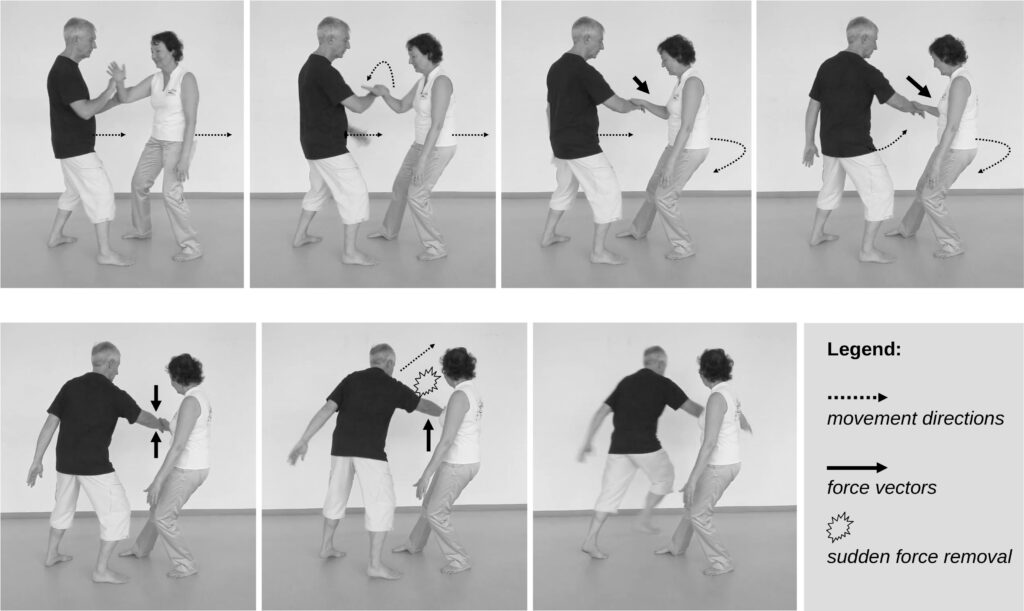Synergy dynamics can be cooperative, or lead to one-sided “wins”. Here our illustrated analysis of a Tai Chi push hands interaction, where Tai Chi expert Hella Ebel lures her push partner into overstepping and falling over.

Synergy dynamics can be cooperative, or lead to one-sided “wins”. Here our illustrated analysis of a Tai Chi push hands interaction, where Tai Chi expert Hella Ebel lures her push partner into overstepping and falling over.

We recently had the delight to publish with some of the best, in Kath Bicknell‘s and John Sutton‘s edited volume Collaborative Embodied Performance: Ecologies of Skill.
Publication: Kimmel, M., & Schneider, S. (2022). Intercorporeal synergy practices – perspectives from expert interaction. In K. Bicknell & J. Sutton (Eds.). Collaborative Embodied Performance: Ecologies of Skill (pp. 187–206). London,: Methuen Drama. http://dx.doi.org/10.5040/9781350197725.ch-010

Moving through our lives we incessantly create interpersonal synergies, for example when we coordinate conversations through body language, carry objects together, work together, move through busy traffic, or engage in team sports. Our “know how” for skillful coordination establishes collective functionalities based on the sharing or synchronization of action elements across the skin boundary, thus, “intercorporeal”.
This project investigates intercorporeal synergies in the expert practices of Tai chi (a Chinese grappling art), Acroyoga (partner acrobatics) and Contact improvisation (a contemporary dance). Our aim is to describe synergies on a micro-scale. Experts are invited to practice sessions where they interact spontaneously and are then queried, supported by video-feedback and a micro-phenomenological dialogue technique known as “Explication Interviewing”.
Taking the experts’ perspective as a starting point, we track the interactive assembly of synergies on a timeline and identify contributing background habits as well as micro-actions that add context-dependent elements. This highlights the emergence or transformation of synergies over time, takes stock of their necessary constituents, as well as clarifying interaction strategies to create them. Further along, we focus on the “architectural” basis of collective structures such as bone alignment or connected force chains across bodies.
Our general aim is to stimulate a dialogue between phenomenology of skill and interaction researchers as well as embodied cognitive science interested in “intercorporeality”. We hope that our detailed process reconstruction inspires biomechanical studies as well as benefits body pedagogy.